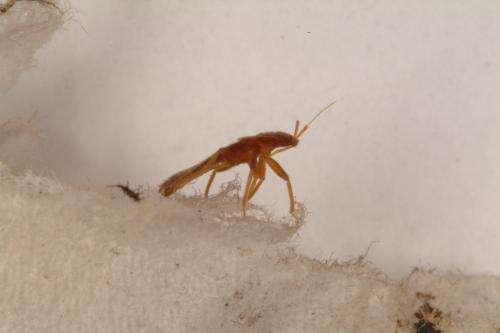(Phys.org) —Researchers in the University of Kentucky College of Agriculture have identified 14 molecular markers in bed bugs that allow them to be resistant to pyrethroid insecticides. Pest control professionals commonly use pyrethroids to control bed bugs because of their safety, affordability, effectiveness and longevity.
UK entomology research associate Fang Zhu and Professor Subba Reddy Palli found the genes associated with pyrethroid resistance belong to diverse categories, and most of these genes are expressed in bed bugs' tough outer shell. These genes could serve as the first barrier for insecticides before reaching target sites on nerve cells, where an additional layer of resistance is common. This resistance strategy has evolved in bed bugs and is based on their unique morphological, physiological and behavioral characteristics. It has not been reported in any other insect species.
The researchers' findings will give scientists a greater understanding of bed bug resistance to insecticides. UK entomologists Ken Haynes and Mike Potter and doctoral students Hemant Gujar and Jennifer Gordon also contributed to the research.
Their results recently appeared in Nature Publishing Group's research journal, Scientific Reports.
More information: The journal article is available at dx.doi.org/10.1038/srep01456.
Journal information: Scientific Reports
Provided by University of Kentucky




















